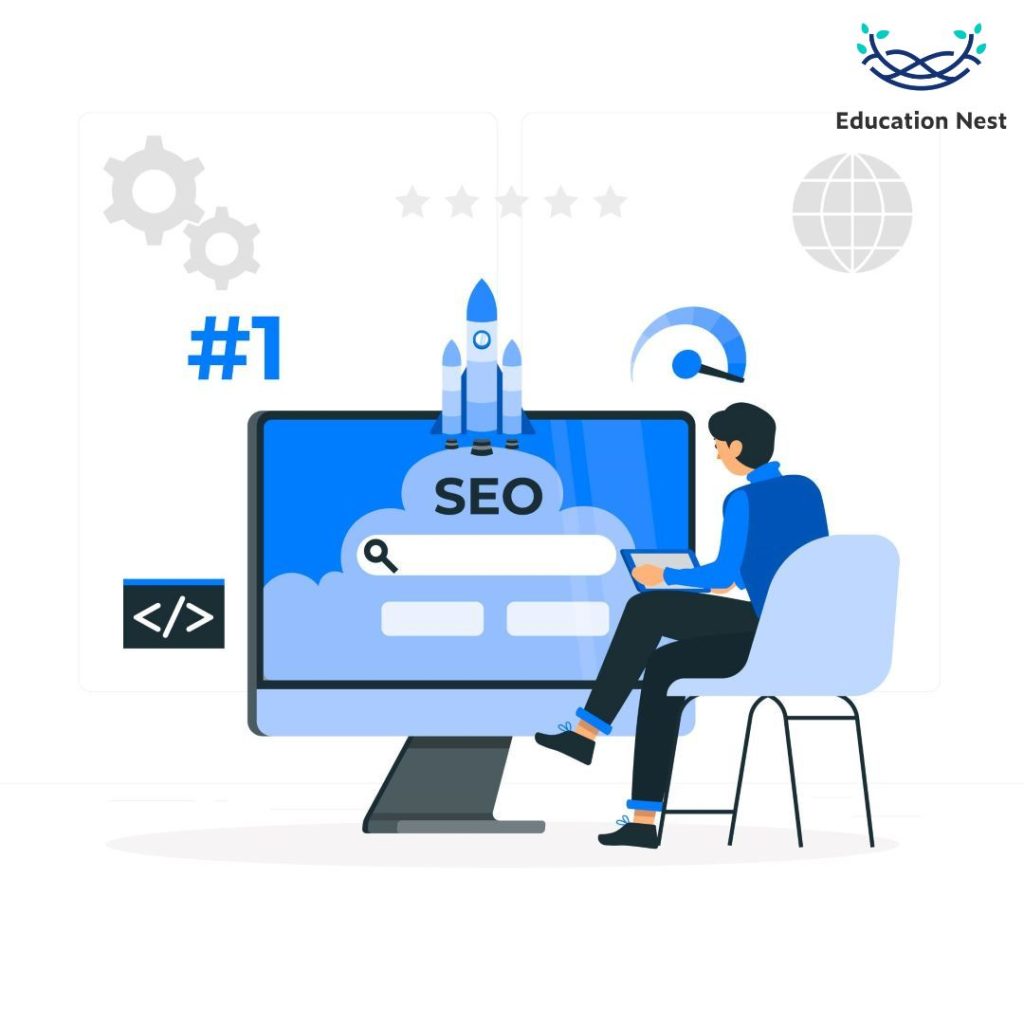Do you ever wish that more people would be able to find your website? SEO, “search engine optimization,” is the best way to get more people to visit a website. Now, read this blog post to learn about “What is SEO and how it works?” Its main purpose is to help your content appear on the first page of search engine results. Furthermore, we also talk about how to use search engine optimization to market your brand or product. Okay, so let’s begin!
First, let’s see what exactly SEO means in Digital Marketing.
SEO in Digital Marketing
“Search Engine Optimization” (SEO) marketing means using strategies to make a website more visible in search engine results. Organic traffic is different from paid traffic when people find your content without paying for it. Instead, people come because of how well the content is organized, how well the website is designed, and how user-friendly the front end is.
This is what SEO means. When a website is well optimized, it has a better chance of ranking in Google’s SERP (search engine research page).
Moving forward, let’s understand how SEO works.
SEO: Meaning and Working

Search engines use algorithms, which are complicated mathematical and processing procedures, to look at and rank websites online. Search engine optimization, or SEO, is a big part of how Google ranks a website. When these signals and the content of a web page match up, amazing things can happen. By using specific strategies and optimizing them as leading signals, your website will rank higher in search results. Search engines will use this information to rank your site based on how well it compares to others.
What signs do the rest of the world look at to judge how well we’re doing? You only need keywords, meta tags, and links from other websites.
Keywords:
SEO keywords are words or phrases that people use to find your website. But putting too many keywords on the site will make it hard to read and make people less likely to return.
Meta Tags:
These pieces of code tell a search engine exactly what to show from your site.
Backlinks:
These are made when a link to your site is put on another site. Just like keywords, the quality and usefulness of shared links are also important.
Search engine optimization can be helped a lot by adding sharing buttons for popular social media sites like Twitter, Facebook, Instagram, LinkedIn, YouTube, and Pinterest.
At this point, we hope you have understood about SEO. Now, let us learn about the various components involved in SEO.
Components of SEO
Here are the most important parts of search engine optimization that make a website successful:
- Marketing
- Content
- Keywords
- Design
- HTML
- Blogs
- Links
- Popularity
Search engines will show the desired website based on the user’s location, the algorithms they use, and the other things listed above. Indeed, all search engines will have to have these features. Of course, no one can guarantee that your site will appear in the top three search engine results, but if you keep these things in mind as you write content, your chances will increase greatly.
Now, let’s understand why SEO is important.
Also Read:
Digital Marketing 101: The Most Simple Guide Ever
Importance of SEO
Now, here are a few points stating why SEO is important.
- If a user is looking for a specific service or product online, they are more likely to choose one of the first five results that come up when they search.
- The more people know about you online and see you in search engine results, the more likely they will go to your site and buy something.
- A well-optimized website makes it clear what is being offered, how to get it, and how to answer any other questions that might come up.
- Sites made with the user in mind make it easy for search engines like Google and Bing to get the information they need. If people have trouble finding their way around your site, likely, search engines will too.
Lastly, let us discuss the elements of SEO.
Elements of Search Engine Optimisation
SEO has two elements, i.e., On-page SEO and Off-page SEO.
When you optimize on-page factors, it can have a direct effect on where that page ranks in search engines. There are a lot of things that go into this, but they all come down to:
- using keywords on your pages and in your content,
- regularly curating high-quality SEO copywriting content,
- making sure that your metatags and titles are well-written and full of keywords.
Technical SEO can’t work without it, even though it takes a lot of work.
Getting backlinks is an example of off-page SEO, which happens outside of your website. To do this, you need to talk to other people and make content that they will want to share.
Conclusion
At this point, you must have clearly understood the basics of SEO. Well, that’s not all! SEO goes way beyond this and has many deeper terms to understand. We will cover SEO in detail in our future blogs.
Let’s review what you did with the information from this ‘What is SEO?’ blog. Your website first caught on with people who only spoke one language in a country. Then it spread to people who spoke two languages and the rest of the world. You turned your small website, which was only optimized for two keywords, into a huge robot. To keep growing at this rate, you must put a lot more money into search engine optimization and related tools.
Indeed, with the help of search engine optimization (SEO) strategies, it’s fun to see your content reach new markets.
